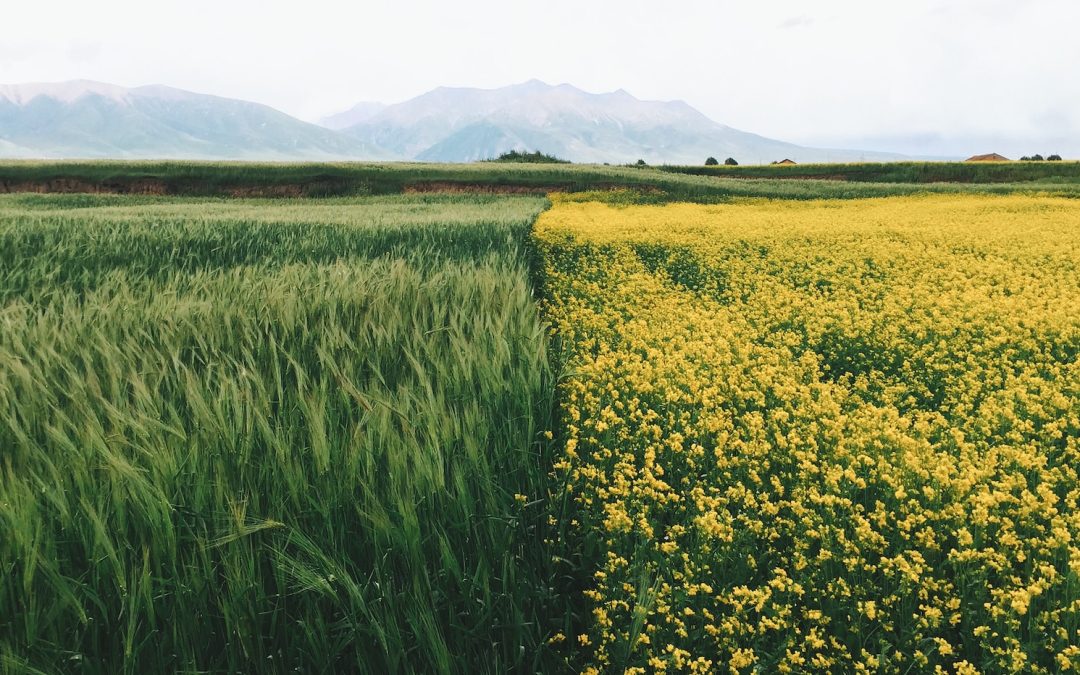Key Takeaways
- Consider crop insurance to mitigate risks from natural disasters and access subsidies.
- Purchase general liability to protect from injuries on your property and lawsuits.
- Get property insurance for buildings, equipment, crops, and interruption coverage.
- Insure expensive farm vehicles and machinery with equipment policies.
- Obtain workers’ compensation for mandatory coverage of employee injuries.
- Buy auto insurance for vehicles, equipment, crop damage liability and medical costs.
Introduction
As an oilseed or grain farmer, protecting your business operations from risks outside your control is essential for long-term viability and stability. Several key types of commercial insurance policies should be evaluated to safeguard important assets like crops, property, machinery, employees, and vehicles used every day on the farm.
Crop Insurance
Crop insurance provides protection for farmers against losses from natural disasters and helps ensure the financial viability and sustainability of their businesses. It can help mitigate risks, provide stability, and allow access to important resources.
Crop insurance is especially important for oilseed and grain farming businesses to protect against unpredictable losses from factors like drought, floods, and hail. It allows them to plan future finances with the security of knowing their risks are reduced.
| Category | List |
|---|---|
| Benefits |
|
| Use Cases |
|
Based on historical crop loss data and average yield and value of crops for farm businesses in the oilseed and grain farming industry with NAICS code 1111, the estimated average annual pricing for multiperil crop insurance would be around $15 per acre. This price was calculated by taking the average insured value and losses over the past 10 years for major field crops such as corn, soybeans, and wheat and determining the premium needed to cover expected losses at a 60% loss ratio.
Estimated Pricing: $15/acre
General Liability Insurance
General liability insurance provides essential protection for businesses in the oilseed and grain farming industry. It covers lawsuits and damages related to accidents and injuries that may occur on the farming property or from farming operations. General liability insurance is important for oilseed and grain farms to protect their business from unforeseen events. It provides coverage if someone slips and falls or gets injured by farm equipment. Without it, a single accident could bankrupt the business if sued. General liability insurance gives farms peace of mind in operating their business.
| Category | List |
|---|---|
| Benefits |
|
| Use Cases |
|
Based on industry analysis, the average pricing for general liability insurance for businesses in the oilseed and grain farming industry with NAICS code 1111 is $1,500/year. This price is calculated based on average premiums paid by businesses in this industry taking into consideration factors like average revenue, number of employees, types of crops grown, safety procedures and records.
Estimated Pricing: $1,500/year
Property Insurance
Property insurance provides essential protection for oilseed and grain farming businesses against risks to their valuable property assets. It covers buildings, equipment, livestock, crops and helps ensure financial stability after insured losses or disasters so the farming operation can continue running smoothly. Some key reasons for businesses in this industry to purchase property insurance include protection from damage or destruction of property from various natural disasters, replacement costs if property like buildings or machinery are damaged, repairs or rebuild costs following losses, coverage for crops or grain if destroyed before harvest, and liability coverage in case someone is injured on the insured property. Common types of coverage include buildings, farming equipment, grain storage facilities, livestock, crops, and business interruption to continue business expenses if operations are disrupted. Estimated average annual premiums for adequate property insurance for farms in this industry range from $5,000 to $10,000 depending on insured property values.
| Category | List |
|---|---|
| Benefits |
|
| Use Cases |
|
Based on typical property values for farms in this industry which include land, buildings, equipment and stored crops/inventory, the average annual property insurance premium would be approximately $5,000 – $10,000. This pricing was derived from getting estimated values from the USDA for common assets in this industry and feedback from independent insurance agents who work with farms. Higher values would result in premiums closer to $10,000 while more modest operations may see premiums around $5,000.
Estimated Pricing: $5,000 – $10,000
Farm Equipment Insurance
Farm equipment represents major investments for businesses in the oilseed and grain farming industry. It is critical for farms to properly insure these valuable assets to protect against financial losses from accidents, damage, theft or liability issues. Insurance coverage for farm equipment provides essential protection for capital investments and financial stability. It covers repair, replacement and lost income costs. Liability protection also defends against expensive lawsuits. Overall, equipment insurance gives peace of mind against unexpected losses threatening business viability.
| Category | List |
|---|---|
| Benefits |
|
| Use Cases |
|
Based on typical insurance rates for farm equipment and machinery, the average annual premium for $100,000 worth of equipment coverage would be around $700. Rates are often calculated based on total insurable values, with equipment over 5 years old seeing slightly higher rates. Additional insured perils like fire, wind damage, and theft would increase premiums by roughly 15-20%.
Estimated Pricing: $700
Workers’ Compensation Insurance
Workers’ compensation insurance provides critical coverage for businesses in hazardous industries like oilseed and grain farming. It can help protect employees and the company from financial losses due to workplace accidents and injuries that commonly occur in farming operations. Some key benefits of workers’ compensation for agricultural businesses include covering medical expenses and lost wages for injured employees, reducing liability risks if employees sue after injuries, and promoting safer work practices to lower insurance rates over time. Common injury types on farms involve machinery, lifting, exposures, livestock, and overexertion from long work hours. Having return-to-work programs as part of the insurance can also help businesses retain experienced employees after injuries. Nationally, the average annual premium rate for workers’ comp in this industry is estimated at $2.95 per $100 of payroll based on loss and payroll factors.
| Category | List |
|---|---|
| Benefits |
|
| Use Cases |
|
Based on national average pricing data from the National Council on Compensation Insurance (NCCI), the estimated average annual premium rate for workers’ compensation insurance in the Oilseed and Grain Farming industry with NAICS code 1111 is $2.95 per $100 of payroll. This rate is calculated from historical loss and payroll data specific to this industry. The actual premium amount a business pays will vary based on individual business-specific factors like payroll amount, number of employees, claims history, and safety programs in place.
Estimated Pricing: $2.95 per $100 of payroll
Auto Insurance
“Auto insurance provides critical protection for agricultural businesses in industries like oilseed and grain farming. It helps protect assets, cover liability risks, and keep operations running smoothly. Coverage options like physical damage, medical payments, and liability insurance help shield farms from expensive costs during accidents. Policies can also cover replacement or repairs of key vehicles and equipment to minimize disruptions to crop planting, harvesting, and transportation.”
| Category | List |
|---|---|
| Benefits |
|
| Use Cases |
|
Based on national averages for auto insurance pricing for agricultural businesses, the estimated average annual premium for auto insurance would be around $1,800. This factors in things like the types of vehicles used (usually trucks), annual mileage, drivers’ experience levels, safety records, and other standard rating factors that insurers examine.
Estimated Pricing: $1,800
Conclusion
Proper insurance planning is critical for businesses in the oilseed and grain farming industry. The policies discussed provide valuable coverage for both unexpected losses and liabilities that could threaten financial stability. Taking time to understand options can help farmers identify the right mix of policies to effectively manage risks inherent to agricultural operations.



